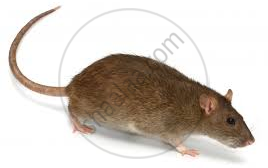Advertisements
Advertisements
Question
The principle of ‘parallax’ in section 2.3.1 is used in the determination of distances of very distant stars. The baseline AB is the line joining the Earth’s two locations six months apart in its orbit around the Sun. That is, the baseline is about the diameter of the Earth’s orbit ≈ 3 × 1011m. However, even the nearest stars are so distant that with such a long baseline, they show parallax only of the order of 1” (second) of arc or so. A parsec is a convenient unit of length on the astronomical scale. It is the distance of an object that will show a parallax of 1” (second) of arc from opposite ends of a baseline equal to the distance from the Earth to the Sun. How much is a parsec in terms of meters?
Solution 1
Diameter of Earth’s orbit = 3 × 1011 m
Radius of Earth’s orbit, r = 1.5 × 1011 m
Let the distance parallax angle be 1”= 4.847 × 10–6 rad.
Let the distance of the star be D.
Parsec is defined as the distance at which the average radius of the Earth’s orbit subtends an angle of 1.
:. We have `theta = r/D`
`D=r/theta = (1.5xx10^(11))/(4.847xx10^(-6))`
`=0.309 xx 10^(-6) ~~ 3.09xx10^(16)m`
Hence, 1 parsec ≈ 3.09 × 1016 m.
Solution 2
From parallax method we can say
θ=b/D,where b=baseline ,D = distance of distant object or star
Since, θ=1″ (s) and b=3 x 1011 m
D=b/20=3 x 1011/2 x 4.85 x 10-6 m or D=3 x 1011/9.7 x 10-6 m =30 x 1016/9.7 m
= 3.09 x 1016 m = 3 x 1016 m.
APPEARS IN
RELATED QUESTIONS
Just as precise measurements are necessary in science, it is equally important to be able to make rough estimates of quantities using rudimentary ideas and common observations. Think of ways by which you can estimate the following (where an estimate is difficult to obtain, try to get an upper bound on the quantity):
the number of strands of hair on your head
Just as precise measurements are necessary in science, it is equally important to be able to make rough estimates of quantities using rudimentary ideas and common observations. Think of ways by which you can estimate the following (where an estimate is difficult to obtain, try to get an upper bound on the quantity):-
the number of air molecules in your classroom.
Answer the following question.
Star A is farther than star B. Which star will have a large parallax angle?
Rulers, measuring tapes and metre scales are used to measure ______
Can you find the diameter of a thin wire of length 2 m using the ruler from your instrument box?
Guess the lengths to draw these things. Ask your friend to draw the same. After you make the drawing use a scale to measure the length. Whose drawing showed a better guess?
| Guess its length and draw |
Measure of your drawing |
Measure of your friend’s drawing |
| An ant of length less than 1 cm |
||
| Pencil of length about 7 cm |
||
| A glass 11 cm high with water up to 5 cm |
||
| A bangle of perimeter 20 cm |
||
| A curly hair of length 16 cm |
Guess whose tail is the longest. Now measure the tails. How good is your guess?






Now cut strips of equal sizes out of it. Using tape join the strips, end to end, to make a belt.
How long is your belt? _________
You can play this game on the ground. Make two squares of one square meter each. Divide your class into two teams. Ready to play!
- How many of you can sit in one square meter?
What is the unit of measurements of very small lengths?
